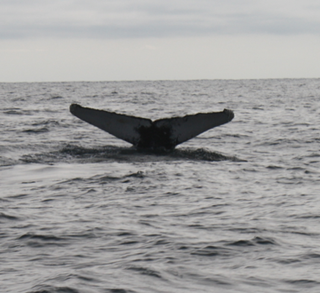Stress
Good News in the Fight Against Ocean Noise
A court blocks the US Navy from using active sonar in peacetime.
Posted July 28, 2016

The assault on the natural world—animal, vegetable and human—that is being waged, in the form of unhealthy noise, by our global economic system, is mind-boggling in scope, and scary in its implications.
Noise that humans consider normal in cities has been shown to increase stress levels and cardiac problems. In the Pacific, low-frequency active naval sonar—the process of emitting loud noises underwater and, by measuring the time it takes for an echo to return, pinpoint the position of enemy submarines—saturates almost 4 million square miles of that ocean, according to Linda Weilgart of Dalhousie University in Canada. The National Resources Defense Council asserts that active sonar hits decibel levels 200 billion times beyond the volume known to adversely affect marine mammals. The fact that sonar causes whale mortality, by disorienting the mammals so that they go off course and are stranded on beaches, has been acknowledged by the US Navy.
Despite some increase in awareness of the problem, very rarely do we see the forces that damage sensory environments and degrade auditory systems obliged to slow down, let alone suffer a defeat. Apologists for those forces cite national defense and commercial profits as overriding concerns, without addressing the ethical dimension of harming intelligent mammals, or the broader issue of how unbridled military and commercial interests might damage the planet's overall ecosystem, without doing much for either our security or our take-home pay.
And yet, one small victory for the whales was achieved this month, when the Ninth US Circuit Court of Appeals, reversing a lower court decision, forbade the US Navy’s use of active sonar in peacetime, in areas close to whales’ habitat.
In 2012 the Navy, in an environmental impact forecast for 2014-2018, estimated that “sonar training and testing might unintentionally harm marine mammals 2.8 million times a year over five years, including deafening 15,900 whales and dolphins and killing 1,800 more over the next five years, in testing in Hawaii, off the California and Atlantic Coasts, and in the Gulf of Mexico.”
This decision isn’t the end of the story. The ruling, on a suit filed by the NRDC based on the Marine Mammal Protection Act, has simply been sent back to the lower court for review.
And naval sonar is far from being the only culprit in the noise pollution of the world’s oceans. Seismic surveys performed by oil exploration outfits still saturate hundreds of thousands of square miles of sea for days at a time. A large cargo ship generates 200 decibels of noise—louder than a rocket takeoff—as its propeller thrashes the water.
An International Whaling Commission survey found that underwater noise levels have doubled every ten years over the past six decades in some areas of the world’s oceans. And this is not new. A survey off Point Sur in California showed a 15 decibel, or 32-fold, increase in ocean noise between 1950 and 1975.
But for now, at least, the whales get a respite.


